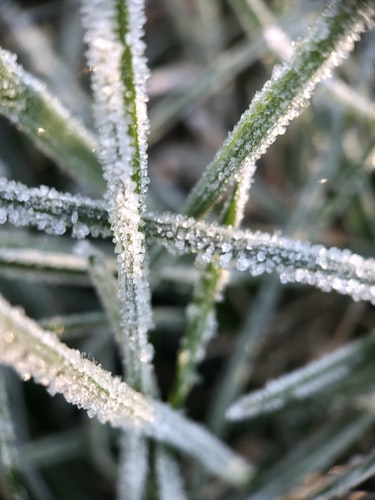Frost Tolerant Plants
Classifying frost tolerant plants is really based on arbitrary decisions.
How heavy or cold is the frost?
Is it -2°C or down to -12°C.
In Australia we don’t really get the extreme cold of the upper northern hemisphere, so much of their advice does not apply to our conditions. We don’t need to remove all water plants from the pond and store them through Winter, because the pond freezes solid.
Other terms often used, are frost hardy and frost resistant plants. Some plants go dormant during the cooler months and in a way avoid the frost. Plants like Japanese Irises produce better flowers if they get a few good Winter frosts.
What causes frost?
Frost occurs when the following 3 thing happen:
- The surface temperature must be at or below 0°C.
- The conditions must be calm, allowing the colder air to sink and pool around low lying areas.
- The surface temperature must be sufficiently cool to cool the air to below its dew point. This is where the water vapour in the air is condensed into water (dew) and then further cooled to freeze onto the surface.
Sunlight warms surfaces during the day, but if the surfaces cannot retain sufficient warmth through the night, the heat will dissipate into the cool clear evening skies. Both dew and frost form after several hours of darkness. If the temperature is about 0°C, dew will form. If the temperature falls below 0°C, frost will form.

What are the effects on plants?
Many plants can be damaged or killed by freezing temperatures or frost. This will vary with the type of plant and tissue exposed to low temperatures. For many plants the damage is caused through the water in the plant’s cells freezing. As the water freezes it expands and for some plants the sharp ice crystals rupture and damage the cells and/or their contents.
Tender soft-tissued plants, such as Miniature papyrus often die when exposed to frost. Frost tolerant plants, like Baumea, tolerate lower temperatures. While some perennials, such as Lythrum and Water Hibiscus can be classified as being frost resistant plants, by becoming dormant after the first frosts and then start to re-grow when the weather warms in Spring. Some plants may completely turn brown and drop all of their leaves, leaving only the stems or stalks standing. Many evergreen plants, such as the Tassel cord rush, will withstand frost although all or most growth stops.
How can I reduce the risk?
- Choosing frost tolerant plants can help to minimise the plant losses.
- Positioning your water feature so that it is located in a warmer part of the garden or is more sheltered from the cold.
- Draping shade cloth over selected plants can help to reduce the temperature drop around the plants and so reduce the potential for freezing.
- Wind is a factor that is difficult to control, but in some high value commercial crops they introduce large fans and even helicopters to move the still air.
- At Oz Watergardens we run our irrigation sprinklers over some areas of the nursery in order to reduce the potential damage that a heavy frost may cause even to our frost tolerant plants.
To simplify the listing of our frost tolerant plants, we have decided to base it on our experiences with the plants at our nursery. We get about a dozen or more frosts each year and generally only down to -3°C. The list is divided into three catagories.
- Evergreen plants that are able to tolerate only a few light frosts ( around 0°C )
- Evergreen plants that are able to tolerate more frequent frosts ( down to -3°C )
- Dormant plants. In our opinion, the dormant plants should be able to tolerate heavier and more frequent frost and are therefore better described as frost resistant plants.
Tips
- Prune the frost damaged foliage after the frosty weather has finished. The damaged parts still shelter or protect the plant parts lower down.
- For information on the plant care and maintenance, go to our Tips & Hints page.